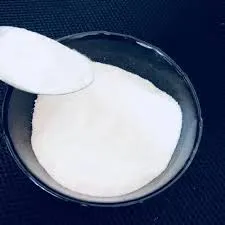
Nov . 06, 2024 13:23 Back to list
Preparation Methods for HPMC Solution in Pharmaceutical Applications
HPMC Solution Preparation A Comprehensive Guide
Hydroxypropyl methylcellulose (HPMC) is a versatile water-soluble polymer widely used in various industries, particularly in pharmaceuticals, food, and cosmetics. Its properties, such as thickening, binding, and film-forming abilities, make it an essential ingredient in many formulations. Preparing an HPMC solution correctly is crucial to ensuring its effectiveness in application. This article will provide a detailed overview of HPMC solution preparation, highlighting key considerations for achieving optimal results.
Understanding HPMC
HPMC is a cellulose ether derived from the natural polymer cellulose, modified through the addition of hydroxypropyl and methoxy groups. This modification enhances its solubility in water and its compatibility with many organic solvents, making it suitable for a wide range of formulations. HPMC is available in various grades, differing in viscosity and substitution levels, which can significantly influence the final properties of the solution.
Choosing the Right Grade
When preparing an HPMC solution, selecting the appropriate grade is the first and foremost step. Different applications require different viscosities and dissolution rates. For example, low-viscosity HPMC is often selected for applications requiring rapid hydration and easy mixing, while high-viscosity grades are preferred for applications demanding thickening and gelling properties. Understanding the application requirements will guide the selection of the correct grade.
Solution Preparation Steps
1. Gathering Materials and Equipment To prepare an HPMC solution, you'll need the following - HPMC powder - Distilled water or appropriate solvent - A magnetic stirrer or high-shear mixer - A scale for accurate measurement - A suitable container (preferably made of glass or plastic)
2. Measuring HPMC Accurately weigh the required amount of HPMC powder based on your desired concentration. The concentration usually ranges from 1% to 5%, depending on the application. It’s vital to adhere to precise measurements to achieve the desired viscosity and consistency.
hpmc solution preparation

3. Water Addition Slowly add the measured HPMC powder to a specific volume of distilled water while stirring continuously. The water temperature can influence dissolution; warm water (about 60-70°C) can accelerate the dissolution process, but it should not exceed the polymer's degradation temperature.
4. Mixing Use a magnetic stirrer or high-shear mixer to ensure thorough mixing. Continue stirring until the HPMC completely hydrates and forms a homogeneous solution. This may take several minutes to an hour, depending on the viscosity grade used.
5. Cooling If warm water is used for dissolution, allow the solution to cool down to room temperature naturally. Avoid rapid cooling, as this may cause phase separation or gel formation.
6. Adjusting pH (if necessary) In some applications, it’s essential to adjust the pH of the solution. HPMC is generally stable in a wide pH range, but certain formulations may require specific pH levels for optimal performance.
Troubleshooting Common Issues
- Clumping or Poor Dissolution If clumping occurs, it may be due to adding HPMC too quickly. Gradually sprinkle the powder while stirring to prevent lumps. - Inconsistent Viscosity Ensure accurate measurements and consistent stirring speeds. Variations can affect the final viscosity of the solution. - Stability Issues Store the prepared HPMC solution in a cool, dry place to avoid degradation over time.
Conclusion
Preparing an HPMC solution involves careful consideration of various factors, including the choice of grade, accurate measurements, and appropriate mixing techniques. By following these guidelines, you can achieve a high-quality solution that meets the specifications of your intended application. Whether it’s for pharmaceutical formulations, food products, or cosmetic formulations, proper HPMC solution preparation is key to ensuring the desired functionality and performance.
-
Versatile Hpmc Uses in Different Industries
NewsJun.19,2025
-
Redispersible Powder's Role in Enhancing Durability of Construction Products
NewsJun.19,2025
-
Hydroxyethyl Cellulose Applications Driving Green Industrial Processes
NewsJun.19,2025
-
Exploring Different Redispersible Polymer Powder
NewsJun.19,2025
-
Choosing the Right Mortar Bonding Agent
NewsJun.19,2025
-
Applications and Significance of China Hpmc in Modern Industries
NewsJun.19,2025







